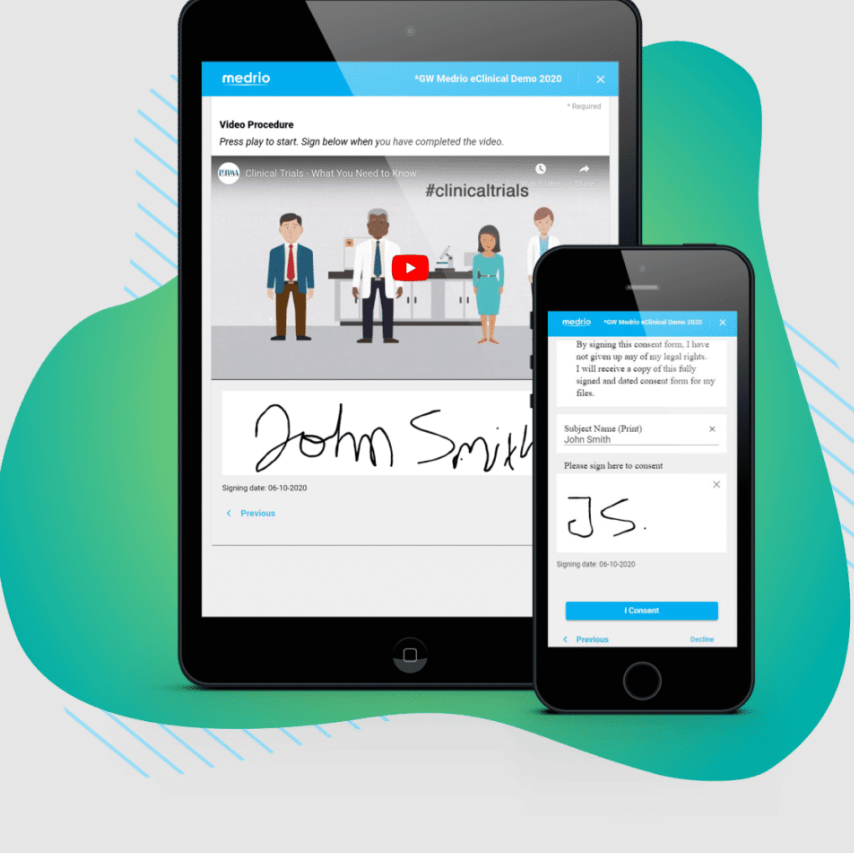Digital transformation in healthcare is accelerating at an unprecedented pace. From AI-driven diagnostics to virtual care delivery, healthcare systems are modernizing rapidly in response to rising patient expectations, operational pressures, and regulatory demands. Yet amid all this innovation, one aspect remains woefully outdated: approvals and signatures.
The moment a signature is required—whether for a treatment plan, clinical trial enrollment, or discharge document—many providers still fall back on paper-based processes or fragmented digital tools not built for healthcare. The result? Delayed treatments, administrative burden, regulatory gaps, and a poor patient experience.
Even healthcare systems that have adopted eSignatures often rely on general-purpose tools like DocuSign or Adobe Sign. While these platforms offer basic digital signature functionality, they were not built with the compliance needs, user diversity, or workflow complexity of hospitals and healthcare networks in mind.
From inpatient admissions to clinical trial enrollment, from insurance approvals to telehealth consent, healthcare relies on fast, secure, and compliant approvals. And the platforms managing those approvals must be flexible enough for any care setting—but rigid enough to meet the most stringent compliance mandates.
This blog explores why legacy eSignature tools are failing healthcare, how outdated pricing models make access difficult, and why a modern platform like Certinal is uniquely built to support eConsent and eCompliance at scale.
The Problem: Paperwork Is Undermining Progress
Most hospitals today are digitizing the patient experience. EHRs are the norm. Patient portals are integrated. Telehealth is mainstream. But behind the scenes, a surprising amount of clinical and administrative work still runs on paper and wet signatures.
Consider the many workflows still tied to outdated approval processes:
- Admission and discharge forms
- Surgical and procedural consents
- HIPAA privacy notices
- Clinical trial enrollment
- Insurance authorization letters
- Staff credentialing and onboarding
- Medical device and supplier contracts
These documents are often printed, manually signed, scanned, and faxed or uploaded—a process that not only introduces errors and delays but also raises serious questions about compliance, auditability, and security.
It’s Not Just Inconvenient. It’s Risky.
Healthcare is uniquely regulated, high-stakes, and distributed. That means:
- A single missing or delayed consent form can delay critical care.
- Poor audit trails expose institutions to liability or regulatory penalties.
- Staff shortages and high turnover mean constantly onboarding new users—something seat-based systems don’t handle well.
- A patient in one facility might need to sign documents that must be validated and stored across multiple systems and teams.
Despite massive investments in digitization, approvals remain the least modernized layer of the healthcare stack. This creates friction at every stage of care delivery:
- Patients are frustrated by paperwork and long intake processes.
- Clinicians waste valuable time chasing signatures.
- Compliance teams lack real-time visibility into approval status.
- Operations struggle with disjointed tools and manual rework.
It’s a paradox: The most important moment—the moment of consent, authorization, or agreement—is also the most vulnerable to delay, error, or noncompliance.
Why Legacy eSignature Tools Fall Short
Healthcare is not like other industries. You can’t apply the same digital tools used in HR or finance to workflows that touch patient care, data privacy, and life-saving decisions. Yet that’s exactly what many organizations have done by implementing generic eSignature tools like DocuSign and Adobe Sign.
These platforms were designed for straightforward, low-risk business processes—approving a budget, signing a vendor agreement, updating HR policies. They were never built to handle the layered compliance, volume, or operational complexity of hospitals, life sciences firms, or payer networks.
Let’s break down the most critical gaps:
1. Pricing That Penalizes Access
The pricing of Docusign as well as the pricing of Adobe Sign follow a user-based or per-envelope model, which doesn’t fit how healthcare operates.
- Hospitals need to give signature access to rotating clinical staff, volunteers, researchers, and affiliates.
- Seat-based pricing limits access, forcing teams to share accounts or avoid digitization altogether.
- New departments, locations, or seasonal staff? That’s more licenses and more cost.
This model might work for a 5-person legal team—but not for a 500-bed hospital, a research institution, or a care network with dozens of sites. It stifles adoption, fragments workflows, and drives up administrative cost.
2. Lack of Built-In Compliance
Healthcare approval workflows are subject to HIPAA, 21 CFR Part 11, eIDAS, and UETA—all of which demand:
- Tamper-proof audit logs
- Secure access controls
- Consent revocation support
- Long-term retention policies
- Identity verification
Legacy vendors offer these as expensive upgrades—if they support them at all. The core platforms are not compliance-first; they’re compliance-optional, which means healthcare teams are forced to build manual workarounds or pay for costly enterprise tiers to achieve basic regulatory coverage.
3. Limited Support for Complex Workflows
In healthcare, a single document might pass through:
- A nurse (initiating consent)
- A patient or caregiver (signing)
- A provider (reviewing)
- A compliance officer (verifying)
- A third-party payer (authorizing)
Legacy tools struggle with multi-party, conditional routing. They offer basic linear flows that break down quickly when exceptions arise—like unsigned documents, missed fields, or dual signers.
Certinal, by contrast, is built to handle multi-role, multi-device, compliance-rich workflows with ease.
4. File Size and Mobile Limitations
Healthcare workflows often include large files—such as imaging reports, multi-page care plans, and annotated consent documents. But legacy eSign platforms typically cap file sizes at 25MB–50MB, making them unfit for real clinical use.
What happens next?
Teams compress files, break up documentation, or resort to insecure workarounds like email or USB transfer—defeating the very purpose of digitization.
Certinal natively supports files over 100MB, making it suitable for even the most data-heavy approvals.
On mobile, legacy platforms offer inconsistent UX—something unacceptable for bedside or in-the-field approvals. Certinal’s interface is designed mobile-first, ensuring physicians, caregivers, and patients can securely sign and submit documents from any device, anytime.
Compliance Isn’t Optional—And It’s Not Cheap When You Get It Wrong
In healthcare, the consequences of noncompliance aren’t just operational—they’re legal, reputational, and financial. Patient data is among the most regulated and sensitive information in the world, and every signature collected—from consent forms to clinical approvals—must be handled with that level of care.
Regulatory frameworks healthcare providers must adhere to include:
- HIPAA: Requires protection of patient health information, with strict auditability and access controls.
- 21 CFR Part 11: Mandates secure electronic signatures and records in clinical trials and regulated research.
- UETA & eIDAS: Set digital signature standards for legal enforceability.
- GDPR (for EU-based or global institutions): Adds additional consent transparency and data handling requirements.
Legacy platforms like DocuSign and Adobe Sign often treat compliance as a feature—not a foundation. That means organizations must pay for “enterprise” plans just to access basic controls like:
- Advanced identity verification
- Consent revocation workflows
- Tamper-evident logs
- Regional data storage
- Multi-factor signer authentication
But here’s the real problem:
Even with these upgrades, compliance still requires custom configurations, external audits, and staff training—introducing risk at every layer.
Every missed field, misrouted form, or unverified signature becomes a potential compliance event. And in healthcare, that risk carries regulatory penalties, delayed reimbursements, or worse—compromised patient safety.
Certinal eliminates this risk with built-in compliance, not tacked-on features:
- Full HIPAA, 21 CFR Part 11, and eIDAS alignment
- Native support for secure signer authentication
- System-generated audit trails—immutable, timestamped, and review-ready
- Consent lifecycle management, including revocation and reissue
- Geo-fenced data handling and storage controls
Compliance shouldn’t cost extra.
With Certinal, it comes standard—because in healthcare, it has to.
5. Certinal: Built for Healthcare, Ready for Scale
Certinal was built with healthcare’s challenges in mind—not retrofitted for them. Its architecture and feature set address the core pain points that hospitals, clinics, research networks, and health systems face when managing high-volume, high-risk approval workflows.
Here’s what makes Certinal different:
✅ Usage-Based Pricing
Certinal ditches the seat-based model in favor of usage-based pricing—so healthcare organizations can give access to every staff member, volunteer, partner, and affiliate without worrying about skyrocketing license costs. You pay for what you use, not for the number of people accessing the platform.
✅ Unlimited Users, No Hidden Fees
Whether you’re onboarding 50 temporary nurses or expanding to 20 new clinics, you never have to renegotiate pricing tiers. There are no API taxes, no envelope caps, and no integration fees.
✅ Large File Support (100MB+)
Certinal supports large documents, including imaging reports, annotated forms, and scanned PDFs—removing the need to compress, split, or offload sensitive documentation.
✅ Mobile-First, Bedside-Ready
Approvals happen everywhere—at the bedside, in the field, or remotely. Certinal’s responsive UI allows doctors, patients, and administrative teams to initiate and complete signature flows from any device.
✅ AI-Powered Workflow Intelligence
Certinal holds patents in AI-driven eSignature workflows, enabling:
- Smart field tagging
- Error-proof routing logic
- Context-aware document classification
- Predictive user prompts for missing signatures or invalid fields
This turns what was once a manual, error-prone process into an automated, intelligent experience that reduces rework and increases compliance.
✅ Built-In Regulatory Compliance
Certinal is fully compliant with:
- HIPAA
- 21 CFR Part 11
- SOC 2 Type II
- eIDAS
- UETA
- GDPR
Whether you’re a hospital in Boston or a global pharma network running trials across the EU, Certinal ensures your documents meet every legal and data security requirement.
6. Real Impact for Healthcare Teams
Certinal isn’t just a better tool—it’s a transformation engine. Healthcare customers using Certinal report significant improvements across multiple dimensions:
📈 Operational Efficiency
- Reduced time to collect patient consent by 60%
- Fewer administrative follow-ups due to AI-driven field validation
- Streamlined staff onboarding and HR documentation
👨⚕️ Care Delivery Acceleration
- Faster pre-op and procedure scheduling due to real-time digital consent
- Seamless collaboration between multi-site teams
- Signatures collected remotely ahead of care to reduce in-hospital delays
🧾 Audit-Ready Compliance
- No more scrambling for records or manually stitching together audit logs
- Regulators and trial sponsors can be given real-time access to immutable records
- Lower risk of consent-related violations
💸 Cost Savings
- Up to 50% reduction in eSignature costs compared to DocuSign and Adobe Sign
- No per-user charges, overage penalties, or API billing
- Better ROI through enterprise-wide adoption
Certinal isn’t just about collecting a signature. It’s about unlocking speed, security, and simplicity across the entire healthcare documentation lifecycle.
7. Conclusion
The digital front door in healthcare is open—but too many back-end workflows remain stuck in the paper age. Every time a nurse hands over a clipboard or a contract gets printed for a manual sign-off, progress stalls.
Legacy platforms like DocuSign and Adobe Sign tried to modernize this, but their rigid pricing, feature limitations, and compliance gaps make them ill-suited for the complex needs of modern healthcare.
Certinal changes that—by offering:
- Usage-based pricing
- Unlimited users
- Support for large medical files
- Embedded compliance
- AI-powered workflow intelligence
From eConsent at the bedside to clinical trial sign-offs in the cloud, Certinal ensures every signature is secure, compliant, and effortless. Book a Demo Now!













